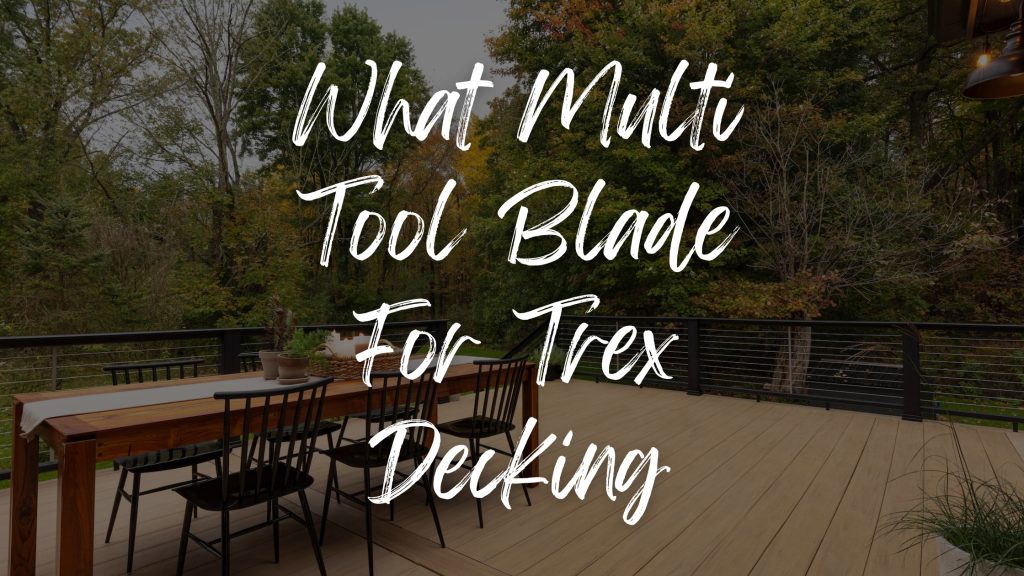The Largest Deck Display In The Midwest
(815) 439-3325 (815) 479-3325 Email Us
We Deliver!
The Largest Deck Display In The Midwest
(815) 439-3325 (815) 479-3325 Email Us
We Deliver!

When working with Trex decking, cutting boards for intricate spaces like posts and edges can be challenging, especially when using a multi-tool. Selecting the right multi-tool blade can make all the difference in efficiency and quality. In this article, we’ll discuss what multi tool blade for Trex decking is best for precise and smooth cuts.
Trex decking is made of a dense composite material, which is much harder than natural wood. Using the wrong blade can result in poor-quality cuts, excessive heat buildup, and even blade damage. Choosing a durable blade with the right tooth design is essential to avoid these issues.
A multi-tool blade with coarse teeth is your best bet when cutting through Trex decking. The large teeth allow for faster material removal, helping to minimize friction and prevent melting, which can happen with fine-toothed blades.
Trex decking’s composite structure can wear out standard blades quickly. Carbide-tipped multi-tool blades offer greater durability and can handle the density of composite materials without dulling as quickly.
Some decking professionals recommend Japanese tooth blades for their aggressive cutting action. However, while these blades may work, they can still struggle with gumming up due to heat buildup from the dense composite material.
Composite materials like Trex can melt slightly when exposed to heat, which can glue the cut back together. Use aggressive blades and keep cutting times short to reduce this effect.
While a multi-tool is excellent for tight spaces, using a jigsaw with a composite-specific blade can be more efficient for larger cuts.
If you’re planning on multiple cuts, invest in a high-quality carbide-tipped blade. These blades stay sharper longer and offer cleaner cuts on composite decking.
When selecting a multi-tool blade for cutting Trex decking, it’s important to choose a blade designed for composite materials. Carbide-tipped blades are the best choice for their long-lasting durability and ability to handle the dense composition of Trex without dulling quickly. If you need to make quick and aggressive cuts, coarse tooth blades are ideal, but be cautious of heat buildup. For more precise and smoother cuts, Japanese tooth blades can work, though they may require additional attention to avoid gumming.
Using the right multi-tool blade will ensure that your Trex decking cuts are smooth and efficient, leading to a faster, more streamlined installation process. Choosing a high-quality, durable blade can save time and prevent mid-project blade replacements.